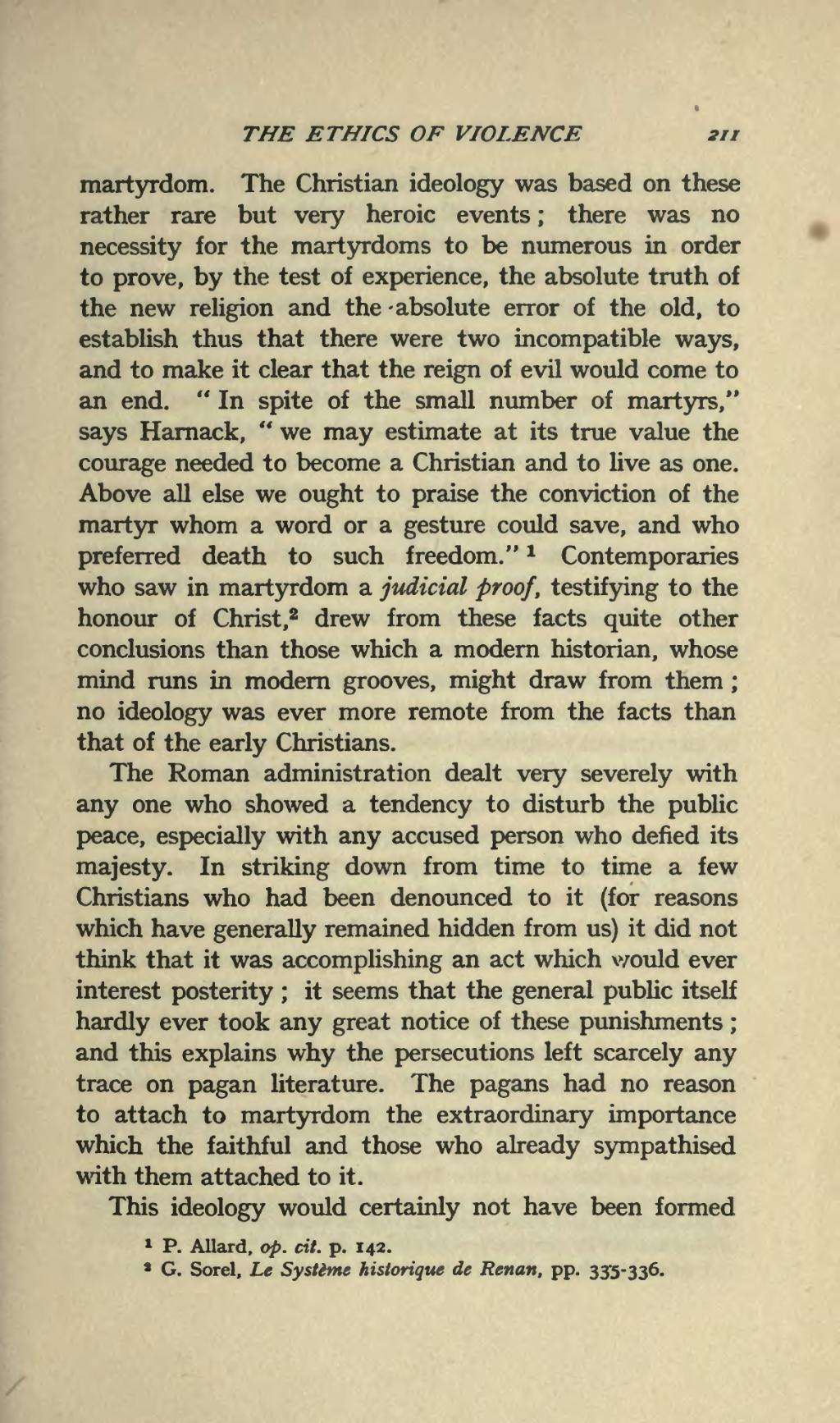martyrdom. The Christian ideology was based on these rather rare but very heroic events; there was no necessity for the martyrdoms to be numerous in order to prove, by the test of experience, the absolute truth of the new religion and the absolute error of the old, to establish thus that there were two incompatible ways, and to make it clear that the reign of evil would come to an end. "In spite of the small number of martyrs," says Hamack, "we may estimate at its true value the courage needed to become a Christian and to live as one. Above all else we ought to praise the conviction of the martyr whom a word or a gesture could save, and who preferred death to such freedom."[1] Contemporaries who saw in martyrdom a judicial proof, testifying to the honour of Christ,[2] drew from these facts quite other conclusions than those which a modern historian, whose mind runs in modern grooves, might draw from them; no ideology was ever more remote from the facts than that of the early Christians.
The Roman administration dealt very severely with any one who showed a tendency to disturb the public peace, especially with any accused person who defied its majesty. In striking down from time to time a few Christians who had been denounced to it (for reasons which have generally remained hidden from us) it did not think that it was accomplishing an act which would ever interest posterity; it seems that the general public itself hardly ever took any great notice of these punishments; and this explains why the persecutions left scarcely any trace on pagan literature. The pagans had no reason to attach to martyrdom the extraordinary importance which the faithful and those who already sympathised with them attached to it.
This ideology would certainly not have been formed
